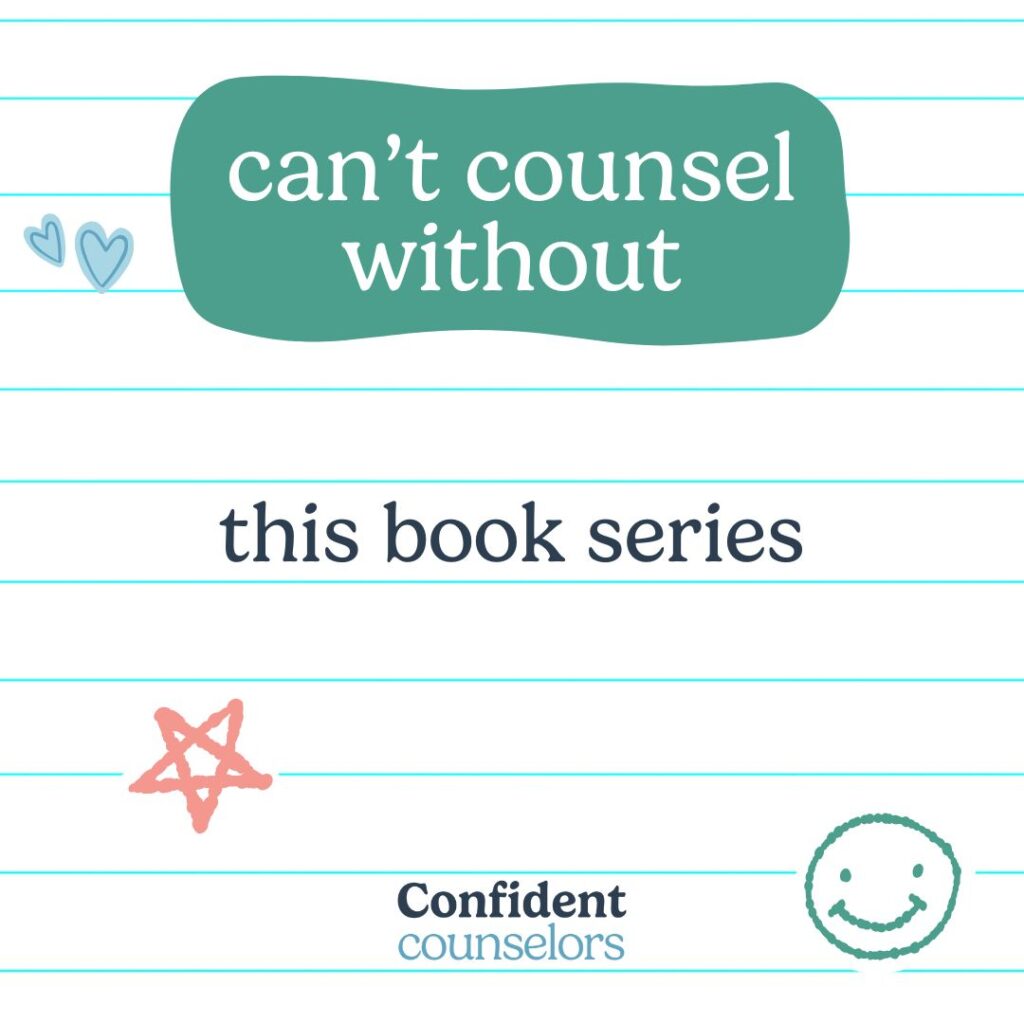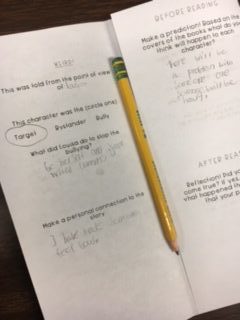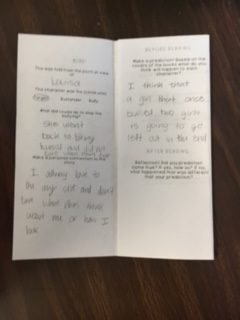A counselor friend of mine recommended the Weird! book series by Erin Frankel to me and I am so glad she did. I could go on and on and on about this series but the testimony really comes from my students.
Each month I do a book giveaway for great behavior. After reading aloud the second book in the series, one of my boys asked me if I could please buy the books for the next giveaway. Even though he only has a one in nine hundred chance of winning, he was so into them that the odds didn’t matter! And he’s not the only one. Even my most hesitant and challenging students are totally into these books.
Why? I have my theories.
First, the illustrations by Paula Heaphy are youthful yet mature.
Second, the topic is totally relevant to every student.
Third, they are so well written. Author Erin Frankel, who is also an educator, makes these books so relatable.
Lastly, the series makes you want more. The books are easy to read, catchy, and intriguing. Like a great movie, you can’t wait for the sequel and feel sadness when the trilogy ends.
About the Weird! Book Series
The Weird! book series is a three-part series that focuses on bullying. The first book, Weird! is told from the point of view of the target.
Side note: I think it’s very important to use the term target and not victim. Anyone can be a target, but not everyone has to be a victim.
The second book Dare! is told from the perspective of the bystander or the person witnessing the bullying. To wrap up the series, you get to hear from the bully’s side in Tough!.
The books take place in a school setting. At some point, you can expect that your own students will be a target of bullying, a bystander to bullying, or the bully themselves. As a School Counselor, I use these books in my classroom lessons. Teachers can use them in their classroom when talking about respect, during a class meeting, or as a book/author study.
Take Your Time
Don’t try to read these books in one sitting. I see my students once a month so it’s taken us three months to get through the series. This really keeps them on the edge of their seats.
Plan to spread the books over a three-day, three-week, or three-month time frame. Don’t overwhelm your students – let it sink it, settle, and stew. I really believe that if you let the students marinate with the books it allows them to take their thoughts to a deeper level.
Activities for the Weird! Book Series
When planning to use these books there’s so much you can do. Here’s what worked for my students:
Introduce the Book
First, I showed the students the cover of all three books and asked them to make observations about each. I then read the back cover and we discussed how each book was told from a different perspective. This lead to a short discussion on point of view which included them making educated guesses on which book was told from what point of view.
Reading the Story
Heads up – set aside a chunk of time to read these books. My classes are forty-five minutes long and they used every second of that time. Even though these picture books are short, the students love making observations and connections between the stories.
I started with three simple prompts:
- “What do you notice about this page?” or “What did you notice about the illustrations?”
- “What connections can you make to the story?”
- “Tell me what you think will happen next,” or “Make a prediction about what’s going to happen.”
The discussion was really student-led from there. Everyone, and I mean everyone, had something they wanted to point out whether it was a story (with names changed to protect the innocent), or a guess about what would happen to the character. I didn’t write down all of the discussions and where they went, but I can tell you that each class really let it morph to where they wanted or needed the conversation to go.
Writing Reflection
To help reflect on the story, I had each of the students respond by completing a Weird Series brochure I created. There is a section for students to make observations before reading the series, and then reflections after the series is complete. There is also a section for each book. I have students write or draw their answers independently, then share as a small group, and if time allows as a whole class.
Art Activity

After reading Weird! and Tough!, I asked my students to take a piece of construction paper and fold it in half. On one side they had to draw a representation of the main character from each book. I kept the prompt vague and I’m glad I did! The results were amazing. Some drew the girls, others used the planets because it aligned with their current social studies unit, and some even drew animals.

Video Activity
After reading Dare! Check out this video by the Ned Show on how to be an upstander. Follow up by role-playing the four strategies from the video.
Assessment Activity
To review I created a Kahoot game based on the book series. Don’t have access to computers or iPads? No worries I created a paper version as well.
Find all of my activities and lesson plans in my activity packet.
A FREEBIE in January!
Love what the Weird! book series did for your students? The dynamic duo of Erin Frankel and Paula Heaphy have also written Nobody!: A Story About Overcoming Bullying In Schools. It’s the perfect follow-up to the Weird! series.
Check out other books that are perfect for school counseling!
15 Must Have Books for Elementary School Counselors
Listening with My Heart: Book Review and Positive Self-Talk Activity




